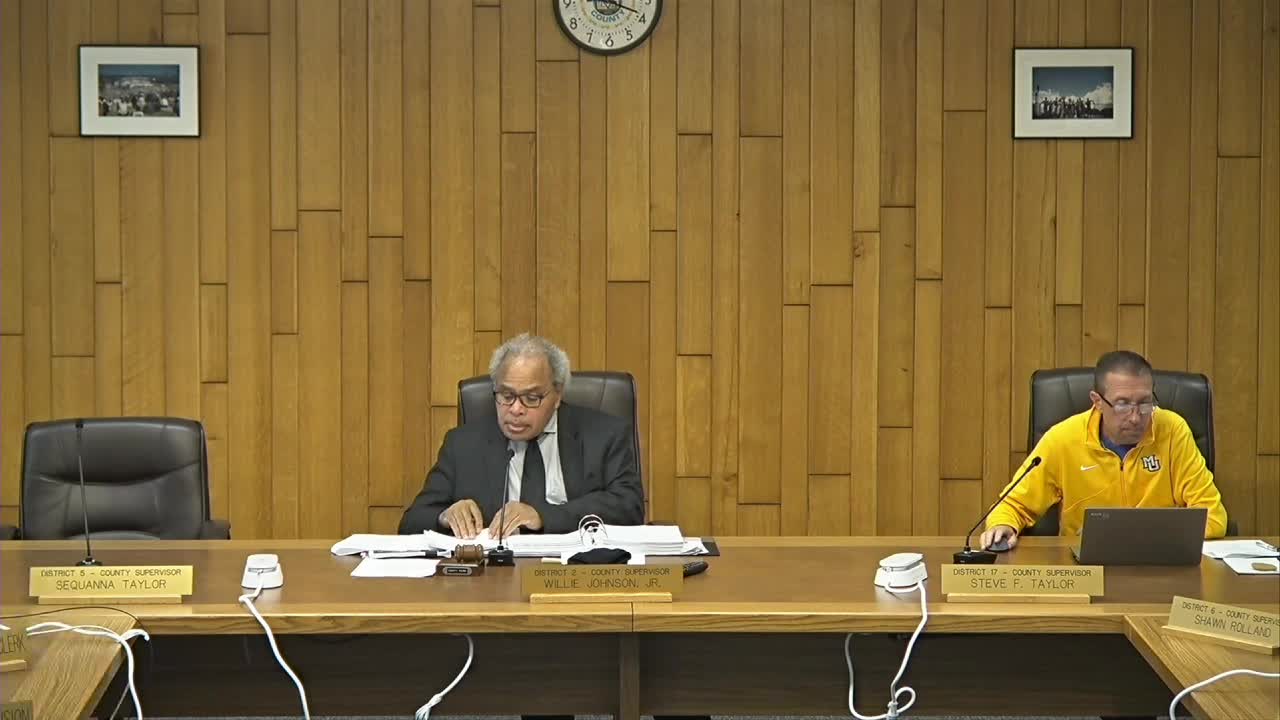Milwaukee County pretrial services highlights screening numbers, GPS costs and program outcomes
October 14, 2025 | Milwaukee County, Wisconsin
This article was created by AI summarizing key points discussed. AI makes mistakes, so for full details and context, please refer to the video of the full meeting. Please report any errors so we can fix them. Report an error »

Milwaukee County Pretrial Services presented operational results for 2024 and outlined its 2026 recommended budget, emphasizing program outcomes and cost pressures from GPS monitoring and higher supervision caseloads.
Vicki Lupo, judicial operations manager for pretrial services, said the program screened 13,962 individuals in the Milwaukee County Jail in 2024 and completed interviews for about 54% of intake cases. Risk assessment results showed 43% of assessed individuals met low pretrial risk criteria and an overall release rate from custody of about 67%.
Why it matters: pretrial screening and supervision influence who is released before trial, public safety metrics and local jail population. Changes in grant funding and equipment costs can affect the county�s ability to provide alternatives to detention.
Lupo provided performance measures: appearance and safety rates for program tracks included an 84% appearance rate and 87% safety rate for general pretrial, an 83% appearance rate and 91% safety rate for OWI supervision, and a 91% appearance rate and 85% safety rate for GPS supervision. Lupo also said 97% of rearrests were for nonviolent offenses in the pretrial group and that less than 1% of OWI rearrests were violent.
Program successes: staff reported diversion and deferred prosecution program completions that produced estimated jail bed-day savings (the presentation listed 11,520 jail bed days saved for diversions with 147 successful completions, 15,333 jail bed days and 126 successful completions for deferred prosecution agreements, and other bed-day figures for TAD and treatment courts). Lupo described supportive programming added in 2024 including cognitive-behavioral groups and peer supports and provided direct participant feedback praising services.
Budget and funding: Lupo said contracted census for pretrial supervision is 1,500 but actual caseloads ran near 1,950; GPS contracted census is 110 but the program ran higher (as high as 170). The Treatment Alternatives and Diversion (TAD) grant from the Wisconsin Department of Justice remained at $400,782. Pretrial revenues decreased after the MacArthur Safety and Justice Challenge grant ended.
Supervisors asked why some low-risk defendants remained detained; Lupo said judicial officers exercise discretion and that the pretrial office provides risk assessments and recommendations but the final custody decision is judicial. Committee members asked what limits pretrial expansion; Lupo and others said GPS growth is primarily a straight cost issue: equipment daily rates and case manager supervision costs.
Ending: Pretrial officials thanked the county for continued support and requested ongoing funding recognition to sustain program levels; no committee votes were taken.
Vicki Lupo, judicial operations manager for pretrial services, said the program screened 13,962 individuals in the Milwaukee County Jail in 2024 and completed interviews for about 54% of intake cases. Risk assessment results showed 43% of assessed individuals met low pretrial risk criteria and an overall release rate from custody of about 67%.
Why it matters: pretrial screening and supervision influence who is released before trial, public safety metrics and local jail population. Changes in grant funding and equipment costs can affect the county�s ability to provide alternatives to detention.
Lupo provided performance measures: appearance and safety rates for program tracks included an 84% appearance rate and 87% safety rate for general pretrial, an 83% appearance rate and 91% safety rate for OWI supervision, and a 91% appearance rate and 85% safety rate for GPS supervision. Lupo also said 97% of rearrests were for nonviolent offenses in the pretrial group and that less than 1% of OWI rearrests were violent.
Program successes: staff reported diversion and deferred prosecution program completions that produced estimated jail bed-day savings (the presentation listed 11,520 jail bed days saved for diversions with 147 successful completions, 15,333 jail bed days and 126 successful completions for deferred prosecution agreements, and other bed-day figures for TAD and treatment courts). Lupo described supportive programming added in 2024 including cognitive-behavioral groups and peer supports and provided direct participant feedback praising services.
Budget and funding: Lupo said contracted census for pretrial supervision is 1,500 but actual caseloads ran near 1,950; GPS contracted census is 110 but the program ran higher (as high as 170). The Treatment Alternatives and Diversion (TAD) grant from the Wisconsin Department of Justice remained at $400,782. Pretrial revenues decreased after the MacArthur Safety and Justice Challenge grant ended.
Supervisors asked why some low-risk defendants remained detained; Lupo said judicial officers exercise discretion and that the pretrial office provides risk assessments and recommendations but the final custody decision is judicial. Committee members asked what limits pretrial expansion; Lupo and others said GPS growth is primarily a straight cost issue: equipment daily rates and case manager supervision costs.
Ending: Pretrial officials thanked the county for continued support and requested ongoing funding recognition to sustain program levels; no committee votes were taken.
Don't Miss a Word: See the Full Meeting!
Go beyond summaries. Unlock every video, transcript, and key insight with a Founder Membership.
✓
Get instant access to full meeting videos
✓
Search and clip any phrase from complete transcripts
✓
Receive AI-powered summaries & custom alerts
✓
Enjoy lifetime, unrestricted access to government data
30-day money-back guarantee

